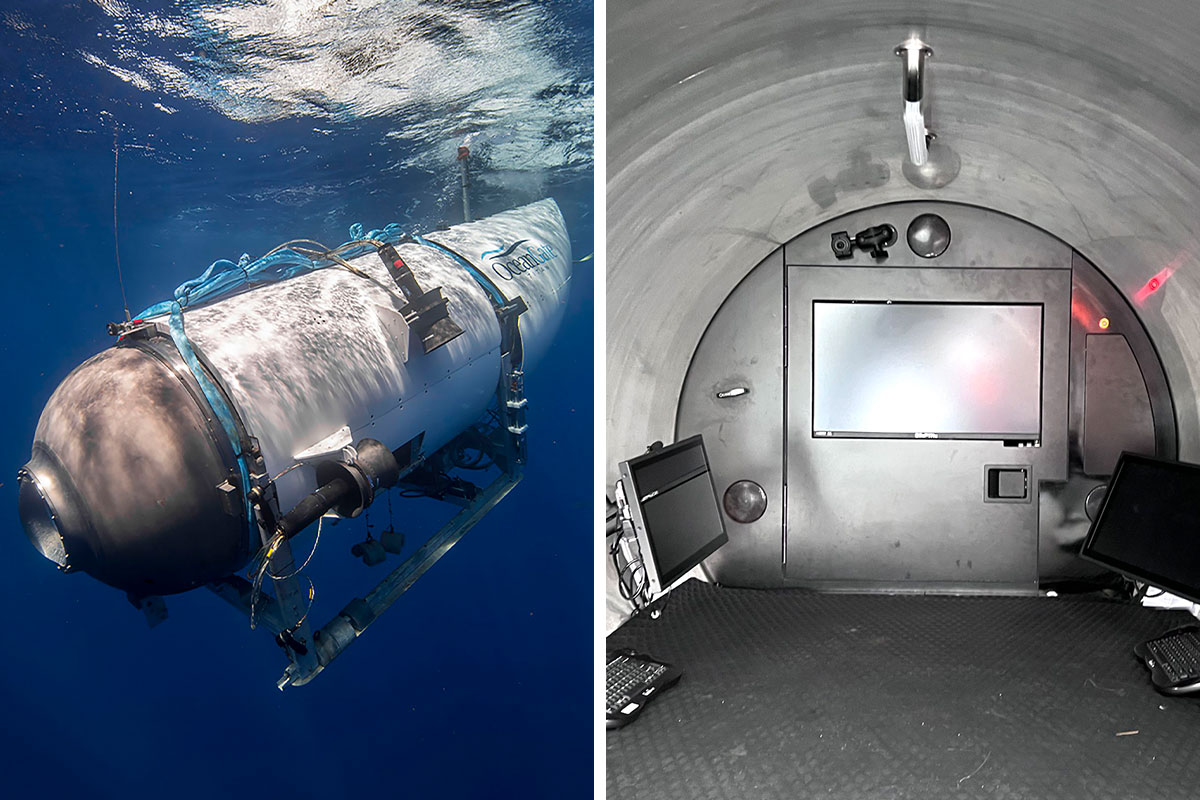If a submarine runs out of oxygen, the crew will experience suffocation and may die as a result. There is a possibility that submarines can be programmed to fill up with inert gases to provide a less painful death.
However, recovery of the vessel may be challenging even if there are no survivors due to oxygen depletion.

Credit: www.boredpanda.com
Oxygen Depletion Risks
If a submarine runs out of oxygen, the consequences can be life-threatening. The crew may experience suffocation, organ failure, loss of consciousness, and ultimately, death. It is crucial for submarines to have adequate oxygen supply to ensure the safety and survival of the crew.
Dangers Of Running Out Of Oxygen In A Submarine:
- Loss of consciousness: Depletion of oxygen can lead to crew members losing consciousness, putting their lives at risk.
- Organ failure: Inadequate oxygen levels can result in organ failure, which can be life-threatening.
- Difficulty in recovery: If a submarine runs out of oxygen and there are no survivors, recovering the vessel becomes a challenging task.
Common Scenarios That Can Lead To Oxygen Depletion:
- Mechanical failures: Malfunctions in the submarine’s oxygen systems or equipment can lead to a rapid decrease in oxygen levels.
- Human error: Accidental damage to oxygen tanks or failure to monitor and replenish oxygen supplies can contribute to oxygen depletion.
- Prolonged submersion: Extended periods underwater without access to fresh air can deplete the oxygen reserves in a submarine.
Impact On Crew Members’ Health And Safety:
- Suffocation: Oxygen depletion can lead to crew members suffocating, resulting in a potentially agonizing death.
- Loss of consciousness: When the oxygen levels drop, crew members may pass out, putting themselves and the submarine at risk.
- Impaired decision-making: Reduced oxygen levels can impair cognitive function, making it challenging for the crew to make critical decisions and navigate the submarine safely.
Remember, it’s crucial to have sufficient oxygen supplies and systems in place to prevent these risks and ensure the safety of submarine crew members.
Effects Of Oxygen Depletion
Running out of oxygen in a submarine can lead to suffocation and potential loss of consciousness for the crew. Without oxygen, organ failure becomes a risk, and recovery of the vessel becomes difficult. It is important for submarines to have adequate oxygen supplies to ensure the safety and well-being of the crew.
:
When a submarine runs out of oxygen, it can have severe consequences for the crew on board. Let’s explore some of the potential effects:
- Organ failure and loss of consciousness:
- Inadequate oxygen levels can lead to organ failure and loss of consciousness.
- The human body relies on oxygen to function properly, and when oxygen levels are depleted, vital organs such as the brain, heart, and lungs can be severely affected.
- Without a sufficient oxygen supply, the crew may experience a gradual loss of consciousness, ultimately leading to a complete blackout.
- Difficulty in recovering the vessel:
- Even if there are no survivors due to oxygen depletion, recovering the submarine can be a challenging task.
- Finding and retrieving a submarine that has run out of oxygen requires sophisticated equipment and specialized expertise.
- The depth and location of the submarine can further complicate the recovery process, making it a time-consuming and potentially dangerous operation.
- Potential long-term consequences for the crew:
- The crew members who survive a submarine running out of oxygen may experience long-term consequences.
- Oxygen deprivation can cause irreversible damage to various bodily systems, including the respiratory, cardiovascular, and nervous systems.
- Depending on the duration of oxygen depletion, the crew members may suffer from medical conditions such as brain damage, lung damage, or heart problems.
- Proper medical care and rehabilitation will be essential for their recovery and quality of life.
While running out of oxygen in a submarine is undoubtedly a serious situation, technological advancements and safety protocols aim to prevent such occurrences. However, in the event that it does happen, the effects can be catastrophic for the crew’s health and well-being.
Oxygen Sources And Alternatives
In the event that a submarine runs out of oxygen, the crew will experience organ failure and loss of consciousness. Oxygen depletion can make it difficult to recover the vessel and could result in a painful death for the crew.
Oxygen is a vital component for the survival of the crew members on a submarine. When the submarine runs out of oxygen, it can lead to life-threatening situations. Therefore, it is crucial to have alternative sources of oxygen to ensure the safety of everyone on board.
In this section, we will explore different methods of supplying oxygen in submarines and discuss the pros and cons of each option.
Different Methods Of Supplying Oxygen In Submarines:
- Pressurized tanks: One method of providing oxygen in submarines is through the use of pressurized tanks. These tanks store a controlled amount of oxygen that can be released when needed. The crew can regulate the flow of oxygen based on their requirements. However, this method has limitations as the supply of oxygen is finite and can run out if not properly managed.
- Oxygen generators: Another option for supplying oxygen in submarines is through the use of oxygen generators. These generators work by separating oxygen from the surrounding air and supplying it to the crew. They can continuously produce oxygen as long as there is power available. This method eliminates the need for storing oxygen in tanks, but it requires a power source to operate effectively.
- Chemical reactions: Submarines can also rely on chemical reactions to produce oxygen. These reactions involve substances such as potassium superoxide or sodium chlorate, which release oxygen when exposed to certain conditions. This method provides a sustainable source of oxygen, but it requires careful handling of the chemicals and regular replacement.
Pros And Cons Of Each Oxygen Source:
Pressurized tanks:
- Pros:
- Controlled release of oxygen
- Familiar technology with a proven track record
- No reliance on power source for oxygen production
- Cons:
- Limited supply of stored oxygen
- Requires proper management to avoid running out of oxygen
- Need for regular refilling and maintenance
Oxygen generators:
- Pros:
- Continuous production of oxygen
- Eliminates the need for storing oxygen in tanks
- Can operate as long as there is power available
- Cons:
- Dependency on a power source for oxygen production
- Potential for malfunction or breakdown
- Generates heat that needs to be managed
Chemical reactions:
- Pros:
- Sustainable source of oxygen
- Can produce oxygen without the need for external power
- Eliminates the need for storing oxygen in tanks
- Cons:
- Requires handling of chemicals and regular replacement
- Potential for chemical hazards if not handled properly
- Chemical reactions may produce byproducts that need to be managed
Submarines have various options for supplying oxygen when the primary source runs out. Each method, whether pressurized tanks, oxygen generators, or chemical reactions, has its advantages and disadvantages. It is crucial for submarine crews to understand and manage these oxygen sources effectively to ensure their safety and survival in case of an emergency.
Frequently Asked Questions Of What Happens If The Submarine Runs Out Of Oxygen
What Happens If A Submarine Loses Oxygen?
If a submarine loses oxygen, inadequate levels can cause organ failure and loss of consciousness. Recovery of the vessel will also be difficult.
How Long Can A Submarine Stay Underwater Without Oxygen?
A submarine can stay underwater without oxygen for a limited time, causing organ failure and loss of consciousness.
Has The Titanic Sub Ran Out Of Oxygen?
The Titanic sub has not run out of oxygen.
How Do People In Submarines Get Oxygen?
In submarines, oxygen is supplied from pressurized tanks or oxygen generators.
What Happens If A Submarine Runs Out Of Oxygen?
If a submarine runs out of oxygen, the crew will experience organ failure and loss of consciousness due to inadequate oxygen levels.
Conclusion
When a submarine runs out of oxygen, the consequences can be dire. Without enough oxygen, the crew members will begin to experience organ failure and loss of consciousness. This can lead to a painful and potentially fatal outcome. The submarine may be equipped with emergency reserves, but these will only provide enough oxygen for a limited period of time.
If the oxygen supply is completely depleted, it can be extremely challenging to recover the vessel and rescue any survivors. To mitigate the risk of running out of oxygen, submarines typically have various methods of oxygen supply, such as pressurized tanks or oxygen generators.
However, the loss of oxygen remains a significant concern for submarines operating deep underwater. Therefore, it is crucial for proper monitoring and maintenance of the oxygen supply system to ensure the safety and well-being of the crew.


